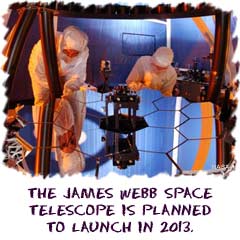|
|
||||||||||||||||||||||||||||
 |
|

|
||||||||||||||||||||||||||
Reflection Start with the basics. When a light ray hits an object and bounces off, it is the act of reflection. When you think of reflection, think about mirrors. They reflect all of the visible light. That is the reason you can see yourself. Even the ocean reflects light, just not all of it. If you are above the ocean, you can't see the reflection that well, but when you are at an angle you can see a reflection of the sky. The ocean only has partial reflectivity.
Start with the basics. When a light ray hits an object and bounces off, it is the act of reflection. When you think of reflection, think about mirrors. They reflect all of the visible light. That is the reason you can see yourself. Even the ocean reflects light, just not all of it. If you are above the ocean, you can't see the reflection that well, but when you are at an angle you can see a reflection of the sky. The ocean only has partial reflectivity.
LensesLenses are pieces of glass that bend light. The easiest examples are lenses in eyeglasses. People who do not have 20/20 vision might see objects a little out of focus. They wear glasses or contact lenses to make their sight clearer. Those glasses have specially ground lenses that bend the rays of light just enough to focus the image for the person to see properly. All lenses bend or refract rays of light.Different ShapesIn the refraction section we said that light changes speeds when it moves from one medium to another. A medium is a substance (like water, air, or glass). When light slows down or speeds up, it changes direction a little bit. There are three basic shapes that a lens can have, concave, convex, and planar. A concave shape is bowed inward, like looking into a mixing bowl. Convex is just the opposite, bowed outward. Have you ever seen those mirrors in the grocery stores, where everything is reflected in a spherical way? That's convex. Planar is just that, a plane. It's a flat surface. Just think of a perfect mirror on your wall.Putting It All TogetherAstronomy takes the ideas of reflection and refraction to build telescopes. They use mirrors and lenses set in a specific order to develop both small and large telescopes. When you hit the stores you will find that reflective telescopes are both less expensive and lighter, usually the consumer choice. Beyond telescopes that use visible light, scientists use radio telescopes. Those telescopes scan the skies for radio waves. Other telescopes look for UV (ultraviolet) rays and IR (infrared) rays. |

|
|||||||||||||||||||||||||||
Useful Reference MaterialsEncyclopedia.com:http://www.encyclopedia.com/topic/telescope.aspx Wikipedia: http://en.wikipedia.org/wiki/Telescope Encyclopædia Britannica: http://www.britannica.com/EBchecked/topic/430495/telescope/ Hubble Telescope Home: http://hubblesite.org/ James Webb Space Telescope Home: http://www.jwst.nasa.gov/ | ||||||||||||||||||||||||||||
|
RETURN TO TOP or Search for more information... * The custom search only looks at Rader's sites. |
|||||||||||||||||||||||||||
©copyright 1997-2015 Andrew Rader Studios, All rights reserved. Current Page: Cosmos4Kids.com | Space Exploration | Telescopes |
||||||||||||||||||||||||||||
|
|
||||||||||||||||||||||||||||

